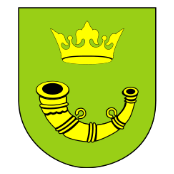GRADIS
WHAT WE ARE DOING?
INVENTORY & MANAGEMENT
All street lighting data in one place: • Integration of existing data. • Inventory. • Visualization of infrastructure status (updates on luminaires, energy consumption, required repairs, maintenance, etc.). • Infrastructure management. • Automatic calculations of lighting classes. • Forecast of subsequent investment needs (in terms of energy efficiency, costs, etc.). • External lighting projects verification.
DESIGN: LAMPS REPLACEMENT OR NEW STREET LIGHTING PROJECT
Photometric calculation with a unique precision level guaranteed by GRADIS algorithms • Photometric design with 81% energy efficiency level • Guarantee of PN-EN 13201 standard fulfillment • Calculation includes projects for several luminaire manufacturers • Multi-variant and multi-criteria projects. • Recommendation of the optimal variant.
DESIGN: UPGRADING EXISTING INSTALLATION
Not planning modernization in the closest future? Luminaries have already been replaced, but the bills are still high? • We offer photometric analysis of an existing installation along with recommendations of optimal settings that will increase its energy efficiency (up to 41% improvement) • Costless reduction of electricity bills.
INVESTMENT STUDY
Comprehensive support for modernization project: • Inventory • Audit of lighting infrastructure • Photometric design including options with various luminaire manufacturers • Verification of dynamic control profitability • Review of available financing sources • Preparation of funding application • Expert input for the tender (precise description of the subject of the contract) guaranteeing the quality of new infrastructure.
BENEFITS
SAVINGS
Up to 81% lower energy consumption after modernization. Reduction of investment costs by 9%. Possibility of additional cost reduction by 15-25% with the use of dynamic control.
SAFETY
Precise photometric calculations increase the safety of both drivers and pedestrians, especially in increased traffic intensity spots. Guarantee of compliance with the lighting standard PN-EN 13201 in all conditions.
HEALTH
Avoiding over-lighting causing light pollution, which has proved negative effects on human health. By disturbing the production of melatonin, it can lead to various diseases.
ECOLOGY
Lowering energy consumption brings reduction of air pollution with CO2, SO2, particular matter and others. Effective lighting also minimizes the negative impact of light pollution on the natural ecosystem.
Three steps to savings
Rewolucyjne Oprogramowanie dla oświetlenia ulicznego Zapewniające: inwentaryzację, audyty, projektowanie, re-design istniejących instalacji, Studium inwestycji oraz wsparcie procesu przetargowego. Projektowanie: Zastąpienie tradycyjnej metody projektowania rewolucyjnym oprogramowaniem GRADIS przynosi rezultaty lepsze o 15–41%. Użycie Sztucznej Inteligencji (AI) pozwala na przeanalizowanie setek, a nawet tysięcy parametrów, które wpływają na konkretną sytuacje oświetleniową. Przekłada się to na precyzyjność projektu, a co za tym idzie na oszczędności energetyczne. Efektywność energetyczna projektu GRADIS w stosunku do tradycyjnego projektu: • BĘDZIN: o 41% lepszy projekt • BYTOM: o 31% lepszy projekt Skrócenie czasu obliczeń: Platforma jest w stanie wykonać projekty wielowariantowe i wielokryterialne dla każdej lampy na terenie inwestycji w kilka godzin. W tradycyjnej metodzie analogiczny projekt liczony jest tygodniami. Projekty Wielokryterialne i wielowariantowe gwarantują zarówno bezpieczeństwo i oszczędności Projekty wielokryterialne: biorą pod uwagę między innymi oszczędność energii, koszty inwestycyjne, koszty użytkowania infrastruktury itp. Projekty wielowariantowe: uwzględniają możliwość dostosowania oświetlenia ulicznego do zmieniających się warunków takich jak: średnia prędkość, natężenie ruchu, warunki atmosferyczne czy światło odbite. Dynamiczne sterowanie: dobiera odpowiedni do panujących warunków poziom oświetlenia przy zachowaniu pełnej zgodności z normami oświetleniowymi. Przynosi to dodatkowe oszczędności rzędu 15–25%. Platforma integruje się z wszystkimi dostępnymi na rynku systemami sterującymi natężeniem np. Owlet, City Touch, Telensa Planet, StreetLite, Via Lumen. PrzykłAdowe Wdrożenia: • POLKOWICE: o 68% mniejsze zużycie energii elektrycznej • ZGORZELEC: o 81% mniejsze zużycie energii elektrycznej
-
Replacing High Pressure Sodium light sources with LEDs results in 40% of energy savings.
-
Choosing the right luminaire and installation parameters brings additional 31% savings
-
Real-time dynamic lighting control saves another 10% of costs.
OUR CUSTOMERS

MUNICIPALITIES AND CITIES

Manufacturers of luminaires

Public and private institutions











